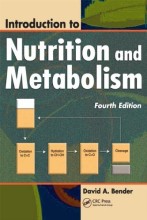Nutritional energy and the role of ATP
6 important questions on Nutritional energy and the role of ATP
What is meant with immaterial and material output?
Material output is for growing/producing of the body -> product.
Explain the breakdown of energy from gross energy to net energy.
What is the percentage of faecal loss of digestion in humans for carbohydrates, fats and protein?
- Higher grades + faster learning
- Never study anything twice
- 100% sure, 100% understanding
What is the metabolisable energy in kJ and kcal of carbohydrates, fats and protein?
What is amylose and what is cellulose?
Cellulose is starch we cannot digest.
How much percent of the energy of glucose are humans able to trap into ATP?
The question on the page originate from the summary of the following study material:
- A unique study and practice tool
- Never study anything twice again
- Get the grades you hope for
- 100% sure, 100% understanding
































